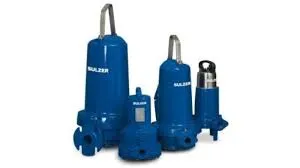Sesotho
- Afrikaans
- Albanian
- Amharic
- Arabic
- Armenian
- Azerbaijani
- Basque
- Belarusian
- Bengali
- Bosnian
- Bulgarian
- Catalan
- Cebuano
- Corsican
- Croatian
- Czech
- Danish
- Dutch
- English
- Esperanto
- Estonian
- Finnish
- French
- Frisian
- Galician
- Georgian
- German
- Greek
- Gujarati
- Haitian Creole
- hausa
- hawaiian
- Hebrew
- Hindi
- Miao
- Hungarian
- Icelandic
- igbo
- Indonesian
- irish
- Italian
- Japanese
- Javanese
- Kannada
- kazakh
- Khmer
- Rwandese
- Korean
- Kurdish
- Kyrgyz
- Lao
- Latin
- Latvian
- Lithuanian
- Luxembourgish
- Macedonian
- Malgashi
- Malay
- Malayalam
- Maltese
- Maori
- Marathi
- Mongolian
- Myanmar
- Nepali
- Norwegian
- Norwegian
- Occitan
- Pashto
- Persian
- Polish
- Portuguese
- Punjabi
- Romanian
- Russian
- Samoan
- Scottish Gaelic
- Serbian
- Sesotho
- Shona
- Sindhi
- Sinhala
- Slovak
- Slovenian
- Somali
- Spanish
- Sundanese
- Swahili
- Swedish
- Tagalog
- Tajik
- Tamil
- Tatar
- Telugu
- Thai
- Turkish
- Turkmen
- Ukrainian
- Urdu
- Uighur
- Uzbek
- Vietnamese
- Welsh
- Bantu
- Yiddish
- Yoruba
- Zulu
Telephone: +86 13120555503
Email: frank@cypump.com
Dec . 18, 2024 02:18 Back to list
septic system with lift pump
Understanding Septic Systems with Lift Pumps A Comprehensive Overview
Septic systems are crucial for managing wastewater in areas not serviced by municipal sewer systems. For many homeowners, understanding the intricacies of septic systems, especially those equipped with lift pumps, is essential for ensuring efficient operation and maintenance. This article delves into what a septic system with a lift pump is, how it functions, and why it is advantageous in certain scenarios.
What is a Septic System?
A septic system is a decentralized wastewater treatment system commonly composed of two main components the septic tank and the drain field. The septic tank is a watertight container that holds sewage waste, allowing solids to settle at the bottom and lighter substances, like grease, to float to the top. The remaining liquid effluent is then gradually released into the drain field, where it undergoes natural filtration through the soil.
The Role of a Lift Pump
In many cases, gravity alone is insufficient to move wastewater from the septic tank to the drain field, especially in areas with low topography. This is where lift pumps come into play. A lift pump, or sewage pump, is an integral part of some septic systems that helps to transport wastewater from the septic tank to the drainage area. This pump activates when the water level in the tank reaches a predetermined height, ensuring that the effluent is pushed toward the drain field, even if the terrain does not allow for natural flow.
How Does a Septic System with a Lift Pump Work?
The operation of a septic system with a lift pump can be broken down into several key steps
1. Wastewater Accumulation As wastewater from toilets, sinks, and other plumbing fixtures enters the septic tank, solids settle to the bottom, and the liquid effluent remains on top.
2. Monitoring Water Levels Inside the septic tank, a float switch monitors water levels. When the water rises to a specific height, the float switch activates the lift pump.
3. Pumping Action The lift pump then works to transport the liquid effluent to the drain field. The pump creates pressure that forces the wastewater through pipes leading to the designated leach field.
septic system with lift pump

4. Effluent Distribution Once the effluent reaches the drain field, it disperses into the soil where it undergoes additional natural filtration and treatment.
5. Return to the Environment The treated water eventually replenishes groundwater resources, completing the cycle of water purification in the ecosystem.
Advantages of Septic Systems with Lift Pumps
1. Efficiency Lift pumps ensure that wastewater is effectively moved from low-lying areas to higher elevations for proper drainage. This feature is particularly beneficial in properties where traditional gravity systems are unsuitable.
2. Space-Saving Design Installing a lift pump can result in a more compact design for septic systems, maximizing land use while adhering to required regulations.
3. Reduction of Soil Saturation By efficiently transporting effluent to the drain field, lift pumps help prevent soil saturation around the septic tank, reducing the likelihood of system failure and prolonging the life of the septic system.
4. Preventing Backups Lift pumps minimize the risk of sewage backups during periods of heavy water flow, ensuring that households maintain sanitary conditions and function without disruptions.
Maintenance Considerations
Maintaining a septic system with a lift pump involves regular checks and servicing. Homeowners should inspect the lift pump annually to ensure it is functioning correctly and not clogged with debris. Additionally, routine pumping of the septic tank every three to five years will prevent solids from building up and causing blockages, ensuring the system operates efficiently.
Conclusion
A septic system equipped with a lift pump is a vital solution for wastewater management in areas lacking adequate drainage. Understanding its components and functionality empowers homeowners to make informed decisions regarding their septic systems. With proper maintenance, these systems can provide effective and reliable wastewater treatment for many years, safeguarding both health and the environment.
-
Slurry Pump PDF Guides Durable Solutions & Expert Maintenance Tips
NewsMay.20,2025
-
High Chrome Slurry Pump Factories Durable & Efficient Solutions
NewsMay.20,2025
-
Double Suction Pump Advantages High Efficiency & Durability XYZ Pumps
NewsMay.19,2025
-
China OEM Slurry Pump Engineering Manufacturer Custom Solutions
NewsMay.19,2025
-
Vapor Blasting Slurry Pumps Durable, High-Efficiency Cleaning Solutions
NewsMay.19,2025
-
Basement Sewage Pumps Reliable, High-Capacity Flood Prevention
NewsMay.18,2025










